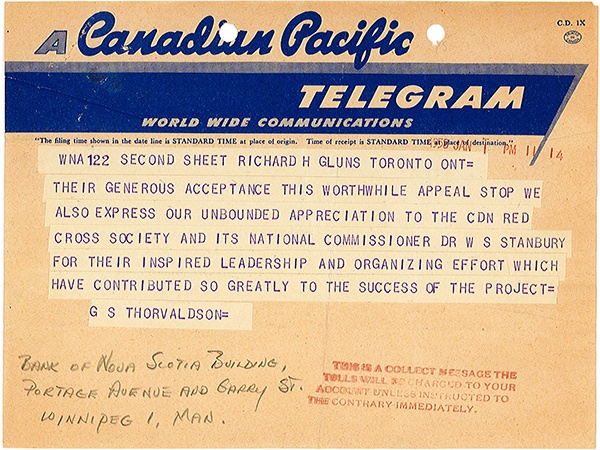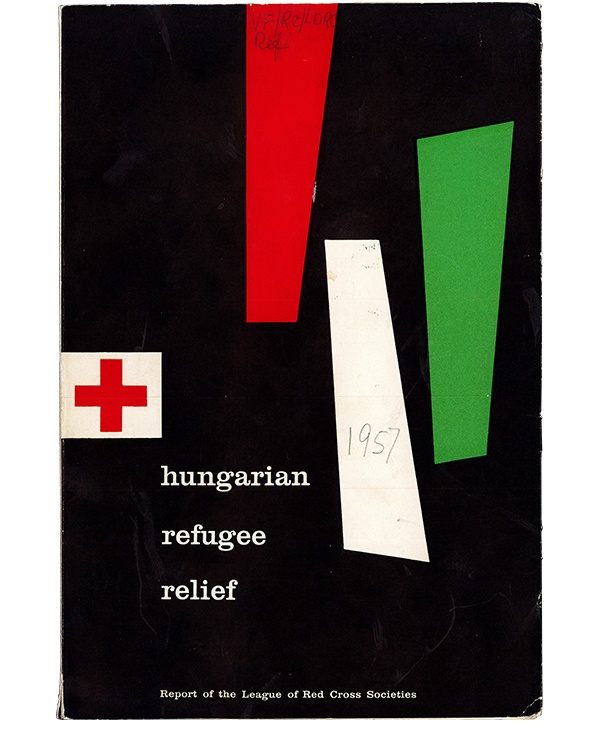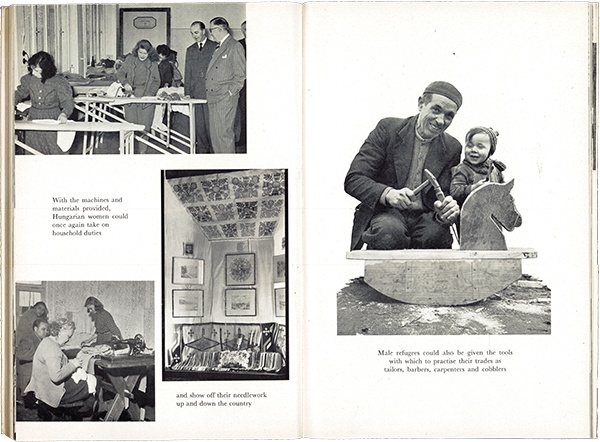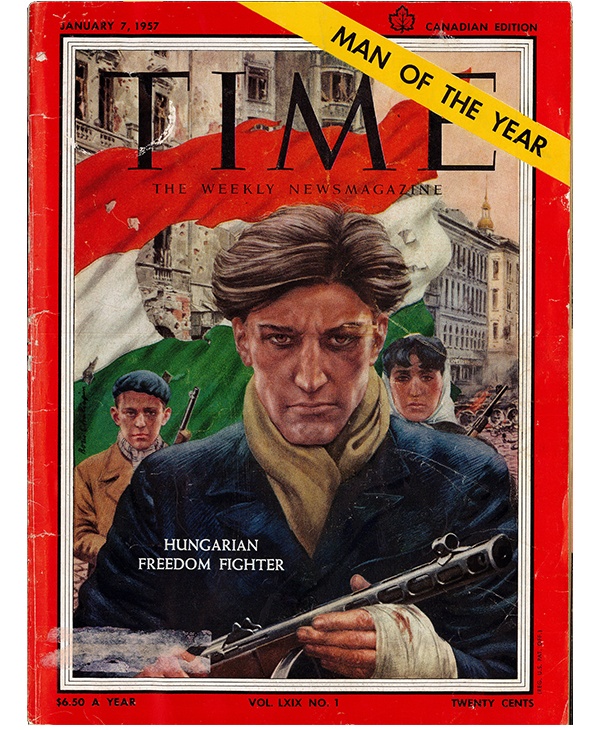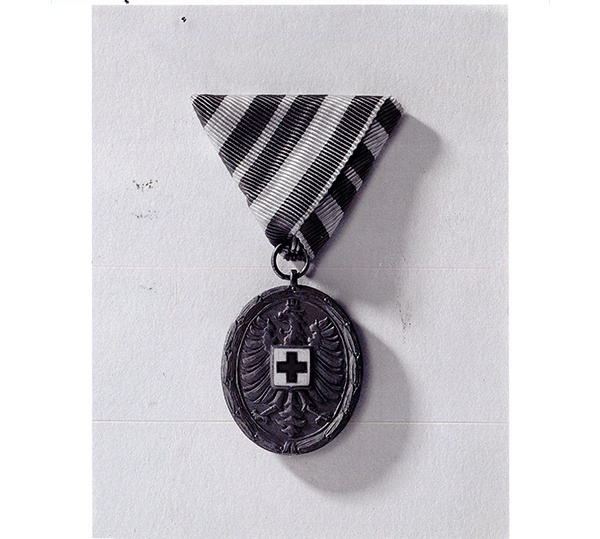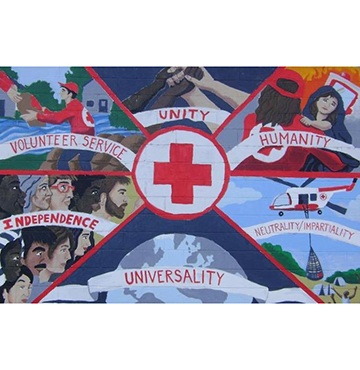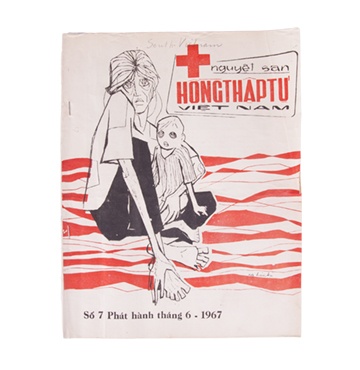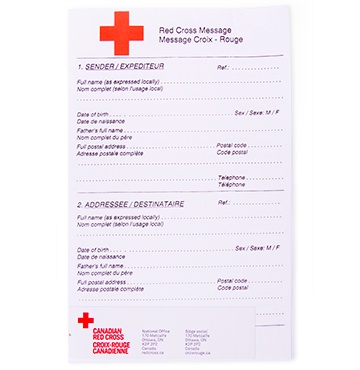Canadian Hungarian Relief Fund Telegram
The world watched in horror when, on November 4, 1956, the Soviet Union began a swift and brutal suppression of the Hungarian Uprising that had begun 12 days earlier. The uprising and the reimposition of communist rule sparked a flood of refugees within Hungary and over the border into neighbouring Austria. This artifact is the second page of a telegram discussing the creation of a Canadian Hungarian Relief Fund, to be administered by the Canadian Red Cross.
Late October 1956 saw a spontaneous popular uprising in Hungary, seeking unprecedented political, economic, and social reforms in the communist-ruled country. The entire country was swept up in the national movement and, remarkably, the uprising seemed to be on the verge of victory. Then November 4 brought the beginning of a violent reassertion of communist control, and Hungarians who were able fled to Austria, creating a refugee crisis there.
The Canadian Hungarian Relief Fund was created and co-chaired by Canadians G.S. Thorvaldson and G.G. Temesvary in response to this unfolding crisis. Contributions toward its goal of $500,000 could be mailed to Red Cross headquarters in Toronto, or brought to any Red Cross branch across the country. The money was used to assist Hungarian refugees in Hungary and Austria.
"As the dimensions of the crisis became clear, the Canadian Red Cross recruited teams of medical and social work professionals to work in the refugee camps."
The relief fund was not Canadians’ only response to the refugee crisis. For instance, readers of Toronto’s Telegram newspaper donated money to a separate relief fund, the proceeds of which were used to provide the Austrian Red Cross with thousands of paper cups for use in Austria’s refugee camps. Each cup featured the red cross emblem and a message in Hungarian explaining that they had come from Toronto Telegram readers via the Canadian Red Cross.
As the dimensions of the crisis became clear, the Canadian Red Cross recruited teams of medical and social work professionals to work in the refugee camps. National Commissioner Dr. Stuart Stanbury also made the society one of the strongest voices among Canadian humanitarian and voluntary agencies pressuring the federal government to take in refugees.
Some 37,000 Hungarian refugees were eventually brought to Canada, where the Canadian Red Cross played a role in welcoming the new arrivals at their point of entry. In subsequent years the society worked behind-the-scenes to successfully negotiate the reunion of hundreds of children in Hungary with their surviving relatives who had come to Canada.
The world watched in horror when, on November 4, 1956, the Soviet Union began a swift and brutal suppression of the Hungarian Uprising that had begun 12 days earlier. The uprising and the reimposition of communist rule sparked a flood of refugees within Hungary and over the border into neighbouring Austria. This artifact is the second page of a telegram discussing the creation of a Canadian Hungarian Relief Fund, to be administered by the Canadian Red Cross.
Late October 1956 saw a spontaneous popular uprising in Hungary, seeking unprecedented political, economic, and social reforms in the communist-ruled country. The entire country was swept up in the national movement and, remarkably, the uprising seemed to be on the verge of victory. Then November 4 brought the beginning of a violent reassertion of communist control, and Hungarians who were able fled to Austria, creating a refugee crisis there.
The Canadian Hungarian Relief Fund was created and co-chaired by Canadians G.S. Thorvaldson and G.G. Temesvary in response to this unfolding crisis. Contributions toward its goal of $500,000 could be mailed to Red Cross headquarters in Toronto, or brought to any Red Cross branch across the country. The money was used to assist Hungarian refugees in Hungary and Austria.
"As the dimensions of the crisis became clear, the Canadian Red Cross recruited teams of medical and social work professionals to work in the refugee camps."
The relief fund was not Canadians’ only response to the refugee crisis. For instance, readers of Toronto’s Telegram newspaper donated money to a separate relief fund, the proceeds of which were used to provide the Austrian Red Cross with thousands of paper cups for use in Austria’s refugee camps. Each cup featured the red cross emblem and a message in Hungarian explaining that they had come from Toronto Telegram readers via the Canadian Red Cross.
As the dimensions of the crisis became clear, the Canadian Red Cross recruited teams of medical and social work professionals to work in the refugee camps. National Commissioner Dr. Stuart Stanbury also made the society one of the strongest voices among Canadian humanitarian and voluntary agencies pressuring the federal government to take in refugees.
Some 37,000 Hungarian refugees were eventually brought to Canada, where the Canadian Red Cross played a role in welcoming the new arrivals at their point of entry. In subsequent years the society worked behind-the-scenes to successfully negotiate the reunion of hundreds of children in Hungary with their surviving relatives who had come to Canada.

